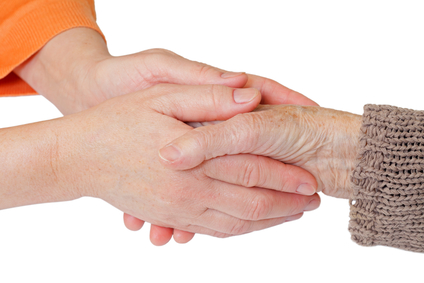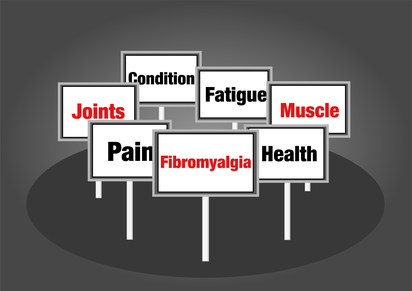Technology & Medicine: A 30,000 Foot Overview – Keynote from Dr. Feyrer-Melk
Watch clips from Dr. Steve Feyrer-Melk’s keynote address at the Institute for Functional Medicine’s 2016 conference, Technology & Medicine: A 30,000 Foot Overview
Lost your password? Please enter your email address. You will receive a link to create a new password.

Watch clips from Dr. Steve Feyrer-Melk’s keynote address at the Institute for Functional Medicine’s 2016 conference, Technology & Medicine: A 30,000 Foot Overview

Dr. Zimmerman specializes in patients with multiple medical problems that haven’t found help through Conventional Medicine. She uses the Functional Medicine Systems approach to address genetic variations and nutritional deficiencies, balance the immune system, hormones, and brain neurotransmitters, plus diagnose undetected Infectious Diseases, GI health, and Cardiovascular/Metabolic issues, instead of just treating symptoms.

Recently I met up with an old friend I hadn’t seen in a couple of years.
Me: “Hey buddy! How are you?”
Friend: “I’m well, thanks! And…look at you! You look really healthy and fit!”
Me: “Well, yeah, thanks. Frankly speaking I’ve been working out, exercising, you know, a good diet, a healthy lifestyle…”

The benefits of health coaching for managing chronic diseases has been growing in popularity for the past decade and contrary to popular belief, a health coach is not someone who is just providing guidance on weight loss. The concept of activation is a crucial component to managing healthy behaviors and for those diagnosed with Parkinson’s Disease (PD) or other neurological conditions, the ability to adhere to exercise programs can be a challenge.
According to Terry Ellis, assistant professor at Sargent College and Director of the Center for Neurorehabilitation, a virtual coach was effective in helping individuals diagnosed with PD adhere to a daily walking regimen. After one month of coaching, Ellis’ study demonstrated a 100 percent retention rate among participants due to the ability of the coach to build social and emotional relationships.
 For those living with neurological conditions, both the availability and accessibility to exercise programs for this population can be a limiting factor. For those with advanced symptoms, driving themselves to an exercise class is not possible and can place an added strain on their caregiver to coordinate such processes. A health coach can be just what is needed to link the patient to the outside world by which they feel connected socially and emotionally. This can provide enough motivation for them to engage in the necessary level of exercise the can significantly reduce symptoms related to PD or other neurological conditions.
For those living with neurological conditions, both the availability and accessibility to exercise programs for this population can be a limiting factor. For those with advanced symptoms, driving themselves to an exercise class is not possible and can place an added strain on their caregiver to coordinate such processes. A health coach can be just what is needed to link the patient to the outside world by which they feel connected socially and emotionally. This can provide enough motivation for them to engage in the necessary level of exercise the can significantly reduce symptoms related to PD or other neurological conditions.
Health coaching for this population should focus primarily on:
Resources
Ellis, T. (2013). Feasibility of a virtual exercise coach to promote walking in community dwelling persons with Parkinson Disease. American Journal of Physical Medicine and Rehabilitation. Vol. 92, Issue 6, pp. 472-485. Doi: 10.1097/PHM.0b013e31828cd466.

Heart disease, also referred to as Cardiovascular Disease (CVD) or Coronary Artery Disease (CAD), is the leading cause of death for both men and women and responsible for approximately 610,000 deaths annually. Someone has a heart attack every 43 seconds in the United States and of those, 1 in 4 will die. Although the rate of mortality (death) has declined over the past few decades as a result of improved medical therapies, a staggering 30% of heart attacks annually are in people that have already had a previous heart event and face increased risk of dying.

If you suffer from chronic pain or fibromyalgia, it’s time to get proactive when it comes to your health. When I was dealing with my chronic back and neck pain and fibromyalgia that occurred from a car accident in 2006 I took everything my doctors said as gospel, but after years of listening and following their instructions, my pain was still not improving. That is until I started to take things in to my own hands.
Maybe The Last Heart Attack
Each year over one million Americans experience a heart attack, about one every thirty seconds. CNN produced a program recently about this that has everyone talking: “Dr. Sanjay Gupta Reports: The Last Heart Attack.” (watch the entire program while it’s archived here)
Following the odyssey of former President Bill Clinton and two more every-day Americans, Dr. Gupta introduces us to the work of Dr. Arthur Agatston whose method of screening for coronary calcium is considered one of the best predictors of heart disease. We’re also exposed to the work of Dr. Dean Ornish and Dr. Caldwell B. Esselstyn whose diet and lifestyle-based programs have shown recognized medical effectiveness at preventing and even reversing heart disease.
“Heart disease could be as rare as Malaria in our country if we put into practice what we already know,” says Ornish. Gupta asks “Could we see the last heart attack in America?” The program brings us excellent information about what we need to do, but hangs on the gigantic “if” in the middle of Ornish’s statement.
 What we know is that medical check ups using the best testing methods available must be combined with successful lifestyle improvement. We know the formula. “Although people with a family history of heart disease are at higher risk, you can take steps to dramatically reduce your risk. Create an action plan to keep your heart healthy by tackling these to-dos: get active; control cholesterol; eat better; manage blood pressure; maintain a healthy weight; control blood sugar; and stop smoking.” —The American Heart Association.
What we know is that medical check ups using the best testing methods available must be combined with successful lifestyle improvement. We know the formula. “Although people with a family history of heart disease are at higher risk, you can take steps to dramatically reduce your risk. Create an action plan to keep your heart healthy by tackling these to-dos: get active; control cholesterol; eat better; manage blood pressure; maintain a healthy weight; control blood sugar; and stop smoking.” —The American Heart Association.
What they are recommending, is all about behavioral change.
The work of Dean Ornish has been widely accepted as medically legitimate for years, yet always qualified by mentioning that the probability of Americans adopting the lifestyle recommended is remote. Becoming a complete vegetarian, exercising regularly, practicing stress management skills and increasing social and emotional support is a tall order to say the least. Yet it works!Gupta’s report is telling us that change is possible, now we have to discover how.
 Here are some suggestions for the behavioral side of preventing that potential heart attack.
Here are some suggestions for the behavioral side of preventing that potential heart attack.
1. Know about your current state of health, in detail. Don’t put off that check-up or blood-work, make a commitment to yourself to get it done.
2. Envision what you want your health to be like.
3. Ask yourself, “What has to change in my life for me to live that vision?” This creates a solid foundation for you to create the plan that you will follow to make your vision a reality.
4. Develop a wellness plan that has a series of small steps. Small steps overtime lead to large lifestyle changes.
5. Gather support for your plan. Share your vision and plan with the people you know who will be positive and encouraging.
6. Track your behavior. Avoid self-deception by writing down or entering on a phone app your progress.
7. Acknowledge and celebrate every success along the way to a better life.
For the person who has already had that first heart attack all of this information and the contents of “The Last Heart Attack” are especially important. Like David Servan-Schrieber says about cancer, there is a lot we can do about heart disease, and when we don’t let people know about the legitimate resources and information out there, we are giving them “false hopelessness.”
 Wellness and health coaches need to know about this information as they help their clients explore their way forward towards a wellness way of living. Coaches need to insist that any client they are working with on health issues be under active medical care. Lifestyle improvement is no substitute for medical treatment. Taking on the more behaviorally demanding protocols of lifestyle improvement that Ornish and Esselstyn require may be incredibly easier and more effective with an active alliance with a wellness coach.
Wellness and health coaches need to know about this information as they help their clients explore their way forward towards a wellness way of living. Coaches need to insist that any client they are working with on health issues be under active medical care. Lifestyle improvement is no substitute for medical treatment. Taking on the more behaviorally demanding protocols of lifestyle improvement that Ornish and Esselstyn require may be incredibly easier and more effective with an active alliance with a wellness coach.
We know that people can be successful at improving their health if they can be successful at lifestyle change. Wellness coaching may be the bridge to span the huge gap created by the word “if”.
Reprinted with permission from the Real Balance Wellness Blog.
Michael Arloski, Ph.D., PCC is a licensed psychologist, Professional Certified Coach (ICF) and a Certified Wellness Practitioner. His work as a professional coach with Real Balance Global Wellness Services includes coaching people to achieve more of their potential in three areas: wellness coaching; leadership coaching; and mentor coaching of aspiring coaches.